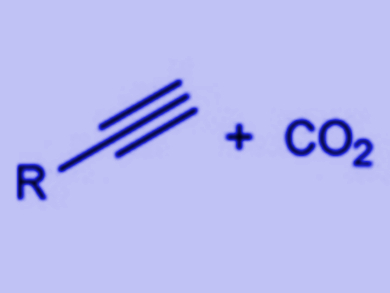Sustainable and efficient methods for the use of CO2 in the chemical industry have been highly sought after. However, current strategies for C–C bond-forming reactions with CO2 as a C1 building block are based on prefunctionalized compounds, which inevitably leads to salt waste and limits the sustainability of such methods.
Lukas J. Gooßen, Ruhr-Universität Bochum, Germany, and colleagues have developed a salt-free strategy for CO2 insertion into non-activated C–H bonds. They found that a copper(I) catalyst can enable the reaction of terminal alkynes with CO2 in the presence of a mild base, in this case, an amine. The resulting ammonium salt is less stable than inorganic carboxylates. Therefore, it can be hydrogenated to the primary alcohol with a rhodium/molybdenum catalyst. In this step, only water is released and the regenerated amine can be recovered, making the overall process waste-free.
This work demonstrates the feasibility of salt-free CO2 conversion by means of C–C bond formation. It provides a general strategy for the transformation of any reaction leading to an ammonium carboxylate into a salt-free hydroxymethylation process.
- Salt-Free Strategy for the Insertion of CO2 into C–H Bonds: Catalytic Hydroxymethylation of Alkynes,
Timo Wendling, Eugen Risto, Thilo Krause, Lukas J. Gooßen,
Chem. Eur. J. 2018.
https://doi.org/10.1002/chem.201800526




